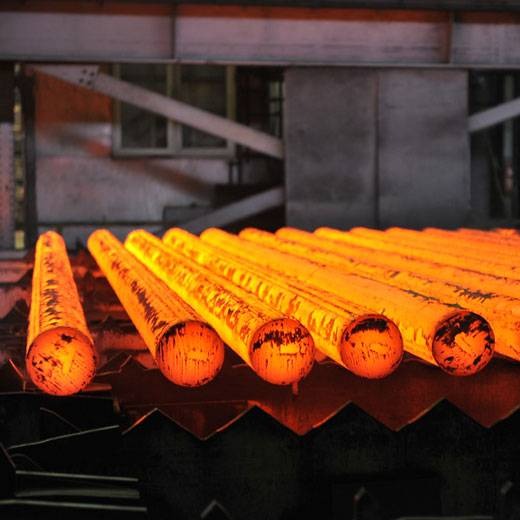Forging high-quality ingots is a critical step in the metal manufacturing process, ensuring that metals achieve the desired strength, durability, and uniformity. Whether for industrial machinery, aerospace, or construction applications, Forging Quality Ingots requires a combination of technical knowledge, precision, and adherence to best practices. This blog explores the key techniques, tips, and considerations for producing superior ingots that meet industry standards.
Understanding Forging Quality Ingots
Ingot forging is the process of transforming raw metal into a solid block with uniform properties. These ingots serve as the foundation for further manufacturing processes, such as rolling, extrusion, and machining. Achieving high-quality ingots is vital because it directly affects the performance of the final product.
Key benefits of high-quality ingots include:
-
Enhanced structural integrity: Uniform microstructure reduces the risk of fractures.
-
Improved machinability: Fewer defects make subsequent processes smoother.
-
Better corrosion and wear resistance: High-quality ingots withstand harsh environments.
Selecting the Right Materials
Material selection is the first and most crucial step in forging quality ingots. The type of metal—whether steel, aluminum, copper, or nickel alloys—determines the forging technique and parameters.
Factors to consider include:
-
Purity of raw metal: Impurities can cause cracks or segregation during forging.
-
Alloy composition: The right balance of elements ensures strength, ductility, and corrosion resistance.
-
Intended application: High-stress applications require metals with superior toughness.
Using high-quality raw materials ensures that the final ingots meet both mechanical and chemical specifications.
Pre-Forging Preparations
Before the forging process begins, several preparatory steps are essential:
-
Melting and casting: The raw metal is melted in a furnace and poured into molds.
-
Degassing and refining: Removing gases and unwanted elements reduces porosity.
-
Inspection of the molten metal: Ensuring uniform temperature and composition is critical.
Proper pre-forging preparation reduces defects and improves the overall quality of the ingots.
Key Forging Techniques
1. Hot Forging
Hot forging involves shaping metal at temperatures above its recrystallization point. This technique increases ductility, making it easier to form ingots without cracks.
Advantages:
-
Reduced work hardening
-
Uniform grain structure
-
Easier shaping of complex geometries
Important consideration: Maintaining the correct temperature is crucial. Overheating can cause oxidation and scale formation, reducing the quality of the ingots.
2. Cold Forging
Cold forging is performed at or near room temperature and is typically used for metals like aluminum and copper. This method improves strength through strain hardening.
Advantages:
-
Enhanced surface finish
-
Higher dimensional accuracy
-
Increased strength and hardness
However, cold forging is less common for large ingots due to the high forces required.
3. Isothermal Forging
Isothermal forging maintains the die and metal at the same temperature throughout the process, commonly used for high-performance alloys like titanium and nickel.
Benefits:
-
Consistent microstructure
-
Reduced residual stresses
-
Superior mechanical properties
This technique is ideal for aerospace and critical engineering applications where precision is paramount.
Heat Treatment and Cooling Techniques
Post-forging heat treatment is essential to enhance mechanical properties and relieve internal stresses.
1. Annealing
Annealing involves heating the ingot to a specific temperature and then cooling it slowly. It improves ductility and reduces hardness.
2. Normalizing
Normalizing ensures a uniform grain structure by heating the ingot and allowing it to air-cool. This is particularly useful for steel ingots.
3. Controlled Cooling
Controlled cooling prevents cracks and distortion. Techniques like water quenching or oil quenching are applied depending on the material type.
Tip: Proper heat treatment combined with controlled cooling is essential to achieve high-quality ingots with optimal mechanical properties.
Inspecting and Ensuring Quality
Even the best forging techniques require thorough inspection to confirm quality. Common inspection methods include:
-
Visual inspection: Detects surface cracks, porosity, and scale.
-
Ultrasonic testing: Identifies internal defects and voids.
-
Hardness testing: Confirms uniform mechanical properties.
-
Chemical analysis: Ensures alloy composition meets specifications.
By integrating these quality checks, manufacturers can guarantee that each ingot meets performance standards.
Common Defects in Ingot Forging
Even with proper techniques, defects may occur. Some common issues include:
-
Segregation: Uneven distribution of alloying elements.
-
Porosity: Air pockets formed during solidification.
-
Cracks: Caused by improper cooling or excessive stress.
-
Surface scale: Oxidation due to high temperatures.
Addressing these defects early in the process is crucial for achieving forging quality ingots.
Industry Best Practices for Forging High-Quality Ingots
-
Maintain precise temperature control during melting and forging.
-
Use high-purity raw materials and avoid contamination.
-
Employ proper die design to reduce stress concentrations.
-
Follow consistent heat treatment cycles for uniform properties.
-
Regularly inspect and test ingots using advanced NDT methods.
-
Document process parameters to ensure repeatability and quality compliance.
These practices help in consistently producing ingots that meet stringent industry standards.
Conclusion
Producing forging quality ingots is a blend of science, precision, and experience. From material selection to pre-forging preparations, controlled forging techniques, heat treatment, and rigorous inspections, every step plays a vital role in achieving ingots of superior quality. By following the key techniques outlined above, manufacturers can ensure their ingots provide exceptional performance, durability, and reliability for a wide range of applications.
